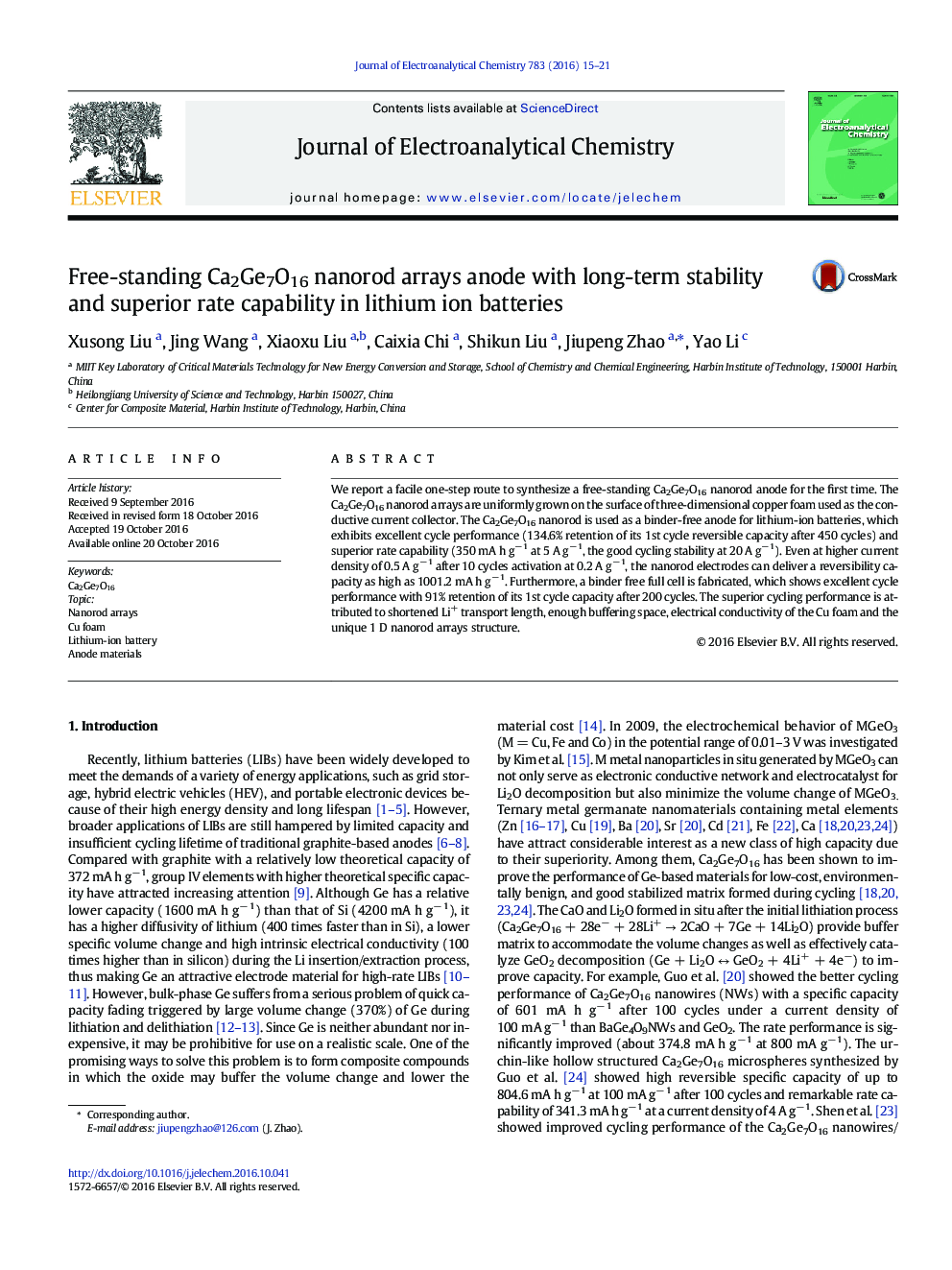| Article ID | Journal | Published Year | Pages | File Type |
|---|---|---|---|---|
| 6477051 | Journal of Electroanalytical Chemistry | 2016 | 7 Pages |
We report a facile one-step route to synthesize a free-standing Ca2Ge7O16 nanorod anode for the first time. The Ca2Ge7O16 nanorod arrays are uniformly grown on the surface of three-dimensional copper foam used as the conductive current collector. The Ca2Ge7O16 nanorod is used as a binder-free anode for lithium-ion batteries, which exhibits excellent cycle performance (134.6% retention of its 1st cycle reversible capacity after 450 cycles) and superior rate capability (350 mA h gâ 1 at 5 A gâ 1, the good cycling stability at 20 A gâ 1). Even at higher current density of 0.5 A gâ 1 after 10 cycles activation at 0.2 A gâ 1, the nanorod electrodes can deliver a reversibility capacity as high as 1001.2 mA h gâ 1. Furthermore, a binder free full cell is fabricated, which shows excellent cycle performance with 91% retention of its 1st cycle capacity after 200 cycles. The superior cycling performance is attributed to shortened Li+ transport length, enough buffering space, electrical conductivity of the Cu foam and the unique 1 D nanorod arrays structure.
Graphical abstractThe Ca2Ge7O16 nanord arrays on cu foam have been successful fabricated for long cyle life and exellent rate performance as lithium ion anodes.Download high-res image (153KB)Download full-size image
